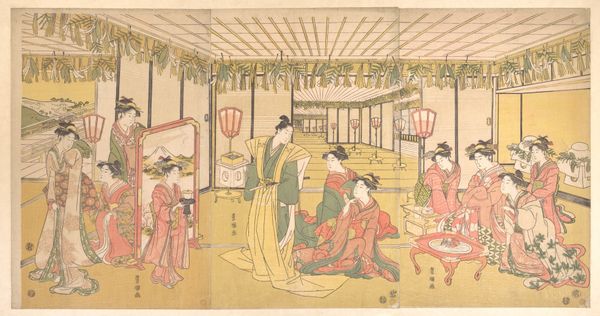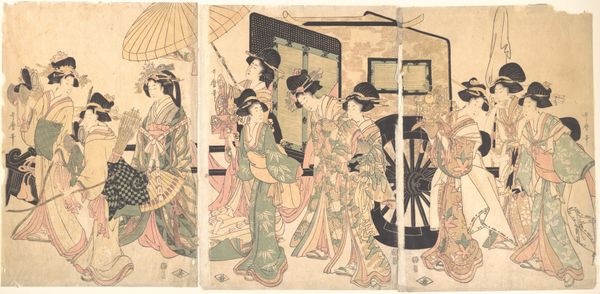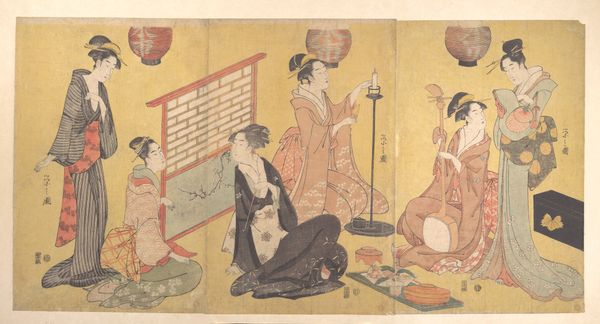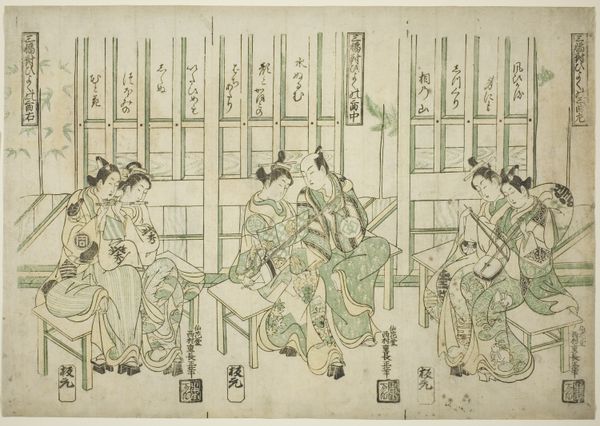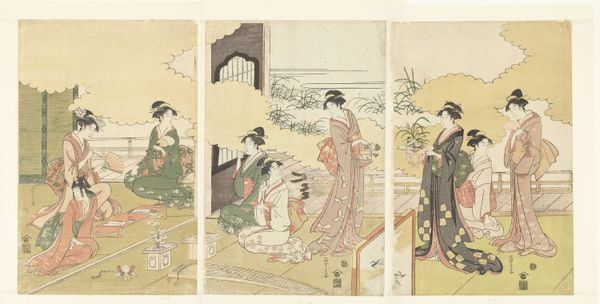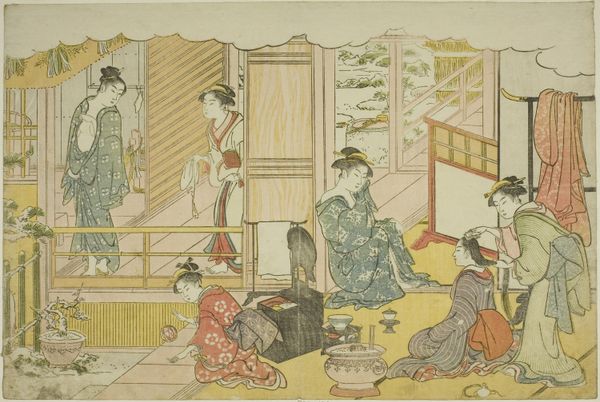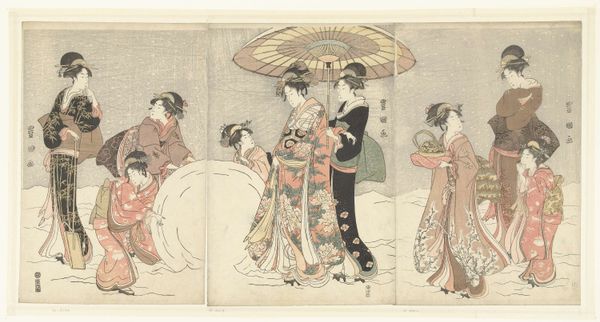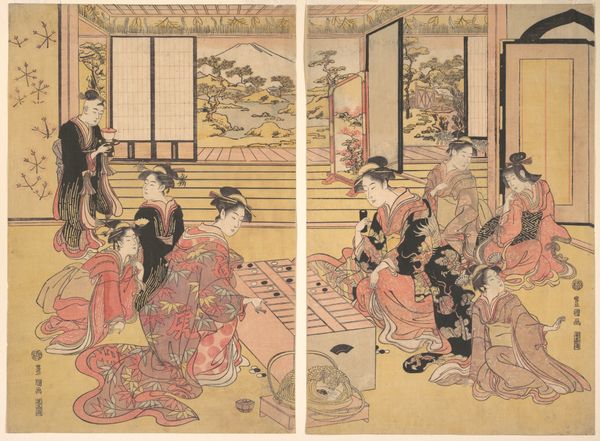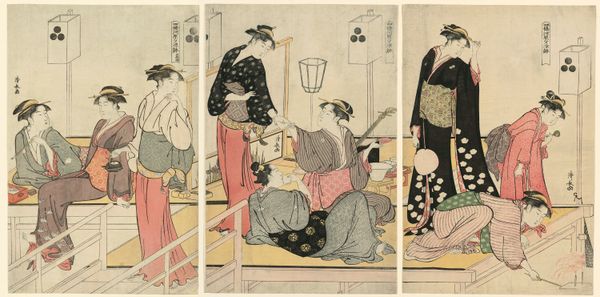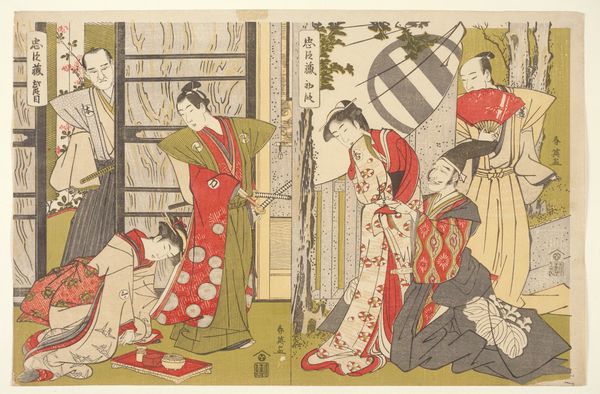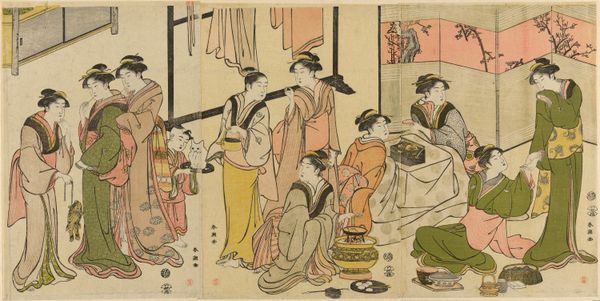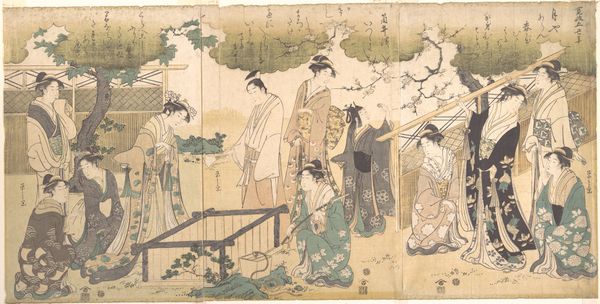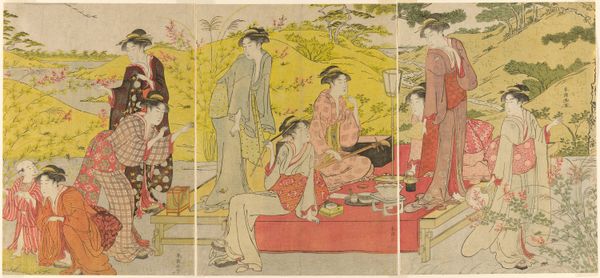
Parody of The Book of Joruri c. 1789 - 1801
0:00
0:00
#
water colours
# print
#
asian-art
#
ukiyo-e
#
figuration
#
genre-painting
Copyright: Public Domain
Editor: This elegant print, "Parody of The Book of Joruri" by Chōbunsai Eishi, dates from around 1789 to 1801. It’s created with watercolours. The composition is quite intriguing; a frieze of figures occupies what seems like a stage. What strikes you most about this particular ukiyo-e? Curator: It is the calculated interplay of the forms themselves. Note the strategic deployment of color. The subtle gradations in the robes create depth, but consider how they also flatten the figures, almost making them architectural elements within the pictorial space. And have you observed the rhythmic repetition of the head ornaments? They produce a cadence across the composition. Editor: I see that now – the ornaments definitely give it rhythm, and it is very structural. It almost feels like a complex equation. I suppose the question then becomes, is there any asymmetrical element, some imbalance, which resolves the pictorial problem the artist seems to have set for himself? Curator: Indeed! Locate the point where that cadence is disrupted, where the colouration departs from the norm. I think you'll find your answer lies there, precisely where Eishi challenges our expectations, resolving the overall composition by offsetting it. Editor: So, it's not about the story, but about the relationship between all the figures within that rectangle. Focusing on how each person's colours relates to each other person's is quite insightful. I might have completely missed this had you not explained that to me. Curator: Precisely! By meticulously dissecting the composition and appreciating its formal qualities, one unlocks its artistic essence, freeing the viewer from the trap of superficial interpretations. Editor: This exploration reveals how structure contributes to meaning in an entirely unexpected way. Curator: Exactly. Art challenges us to go beyond what is plainly depicted and forces us to contemplate the artistic framework behind its realization.
Comments
No comments
Be the first to comment and join the conversation on the ultimate creative platform.

